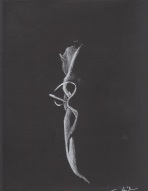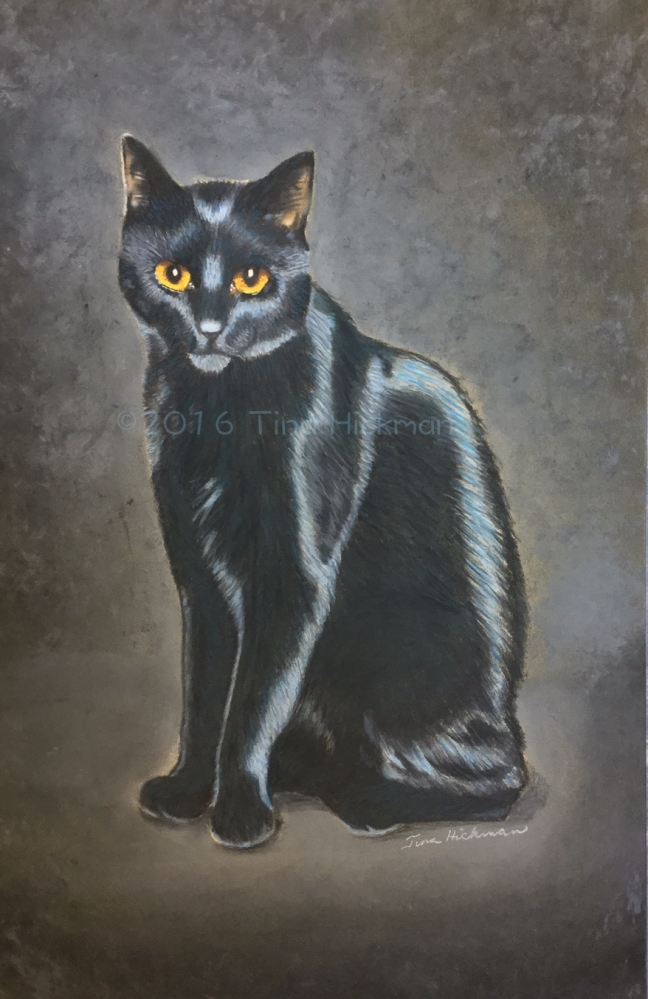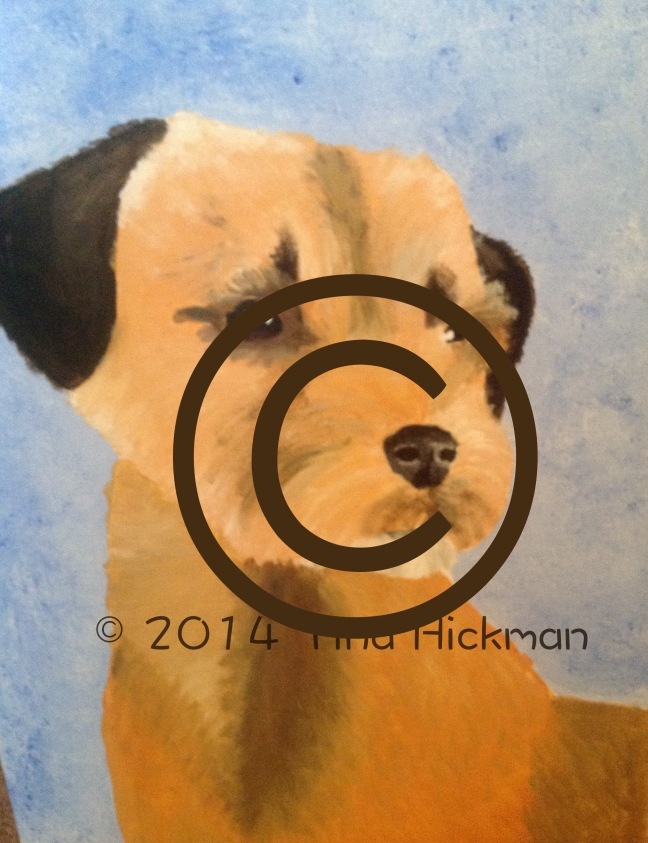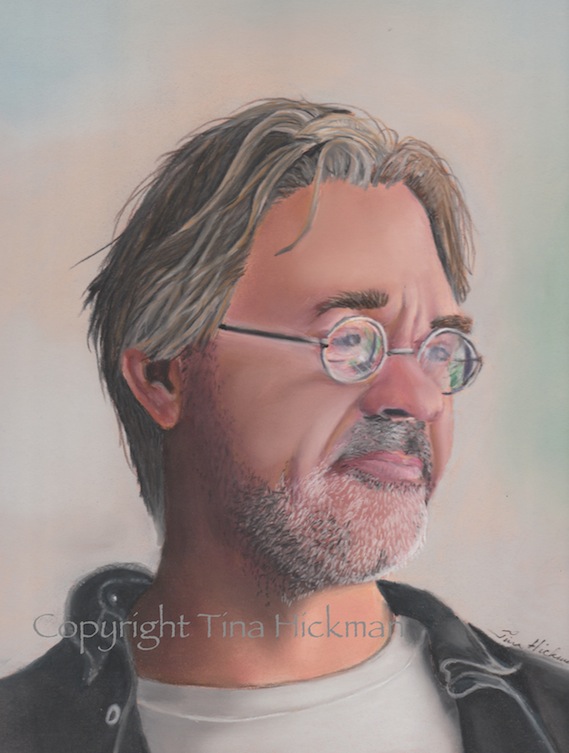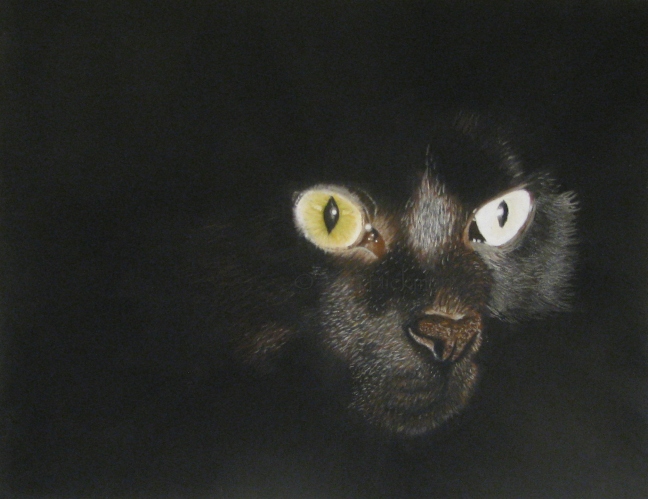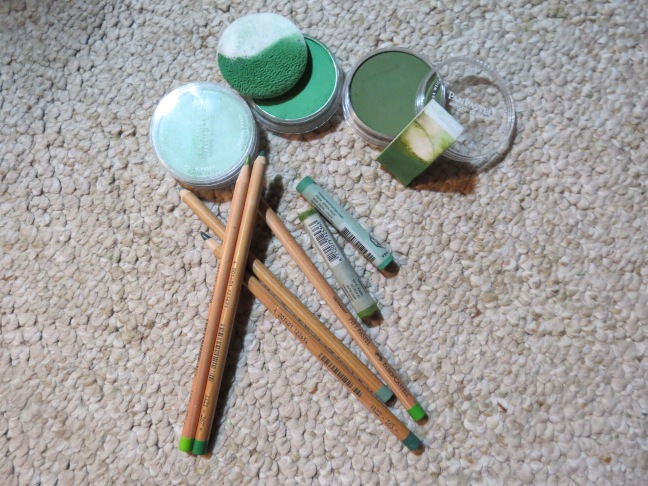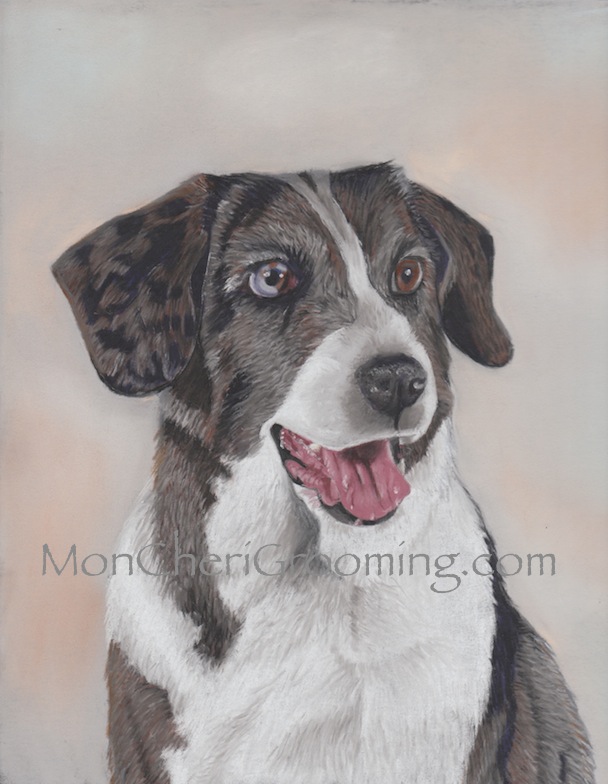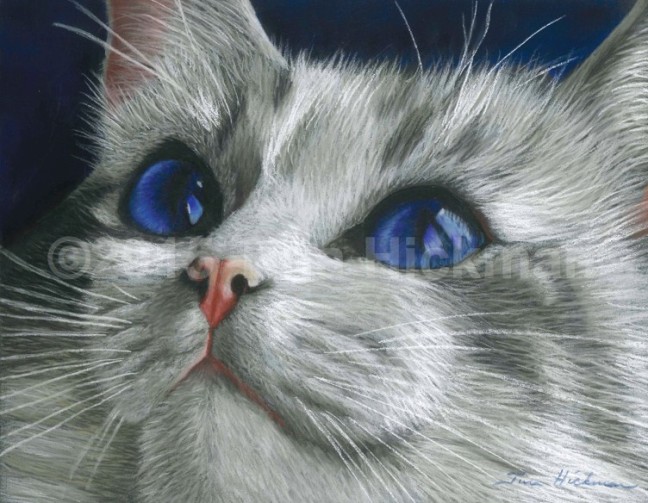Recently I began experimenting with water and pastels. This is a huge step for me, because I do NOT like to experiment. I like to know what my materials are going to do, and then I can try to make them do it. Flat out experimentation uses up paper and pastels and may result in something I don’t like! But I recently became intrigued with the idea of using water in a pastel drawing.
In July of 2014, my father and I took a trip to Alaska. It is a trip I’d been wanting to make for over 20 years, and for my father, it was the fiftieth state he’d visited. We had a great time.
My father brought home a large, poster-sized photographic print of Mt. McKinley in a glorious pink and purple sunset. He had it professionally framed, and it was stunning on his wall. But one day in September of 2015, it accidentally got smashed. Although the wooden frame remained largely unscathed, the glass shattered, and the shards scratched and even gouged the print. He was not in a position to replace it, so he asked me to repair it. The plan was to buy some cheap paint and have me touch it up. Since my preferred medium is pastels, I wasn’t entirely sure how I felt about that, but he was in earnest, so I agreed to try.
When I went to visit him in January 2016, I had not yet invested in the paints, but I had brought along my pastel pencils in anticipation of working on the cat drawing above. Sadly, I got exactly zero work done on the cat, but it occurred to me that I might be able to use the pastel pencils to repair his photo. After all, I had a wide range of colors to work with. If I could get the pastels to adhere to the photo paper, I might just be able to pull it off!
Guess what. Pastels don’t stick to poster sized photographic prints except where the print is so deeply gouged as to reveal the foam board underneath, and even then, the color still won’t carry all the way to the edge of the gouge.
But I remembered on my first set of pastels I ever bought, the Stabilo Carbothellos, it says on the pencil tin that they are water soluble. Well, it says they’re “Aquarelle”, and I don’t speak French, but I had always wondered how one went about using water with pastels. It doesn’t make sense to me. So my father and I decided I would try using water with the pencils somehow in order to repair his photo. After a little experimentation, I learned that by soaking the pencil tips in a little cup of water for a few seconds, it was possible to soften the “lead” of the pencil and get it wet enough to use as a sort of paintbrush to apply the color as necessary.
It worked!
I was able to fill in all the scratches, and even the gouge looks pretty good. Well, you can definitely see some of the larger repairs if you walk up to the piece, but my dad is colorblind, so he can’t see the difference. 🙂
After that, I became very curious about using water with pastels and how I might go about it. This drawing of Phantom (my cat, now passed on) was the first experiment I did with water and pastels. I used a natural sponge to create the mottled background, and it turned out exactly the way I wanted. I couldn’t have been more pleased! Okay, so Phantom isn’t my best pet portrait, but you gotta cut me some slack. It was drawn from an old grainy snapshot in which the cat is only about two inches high, and the drawing is 11 x 17″. That’s okay. I think it turned out well considering the shortcomings of the reference, and the background was a great learning experience.
The piece I am currently working on uses water much more extensively. I have ideas now, and I’m curious to see how water can expand my horizons.
